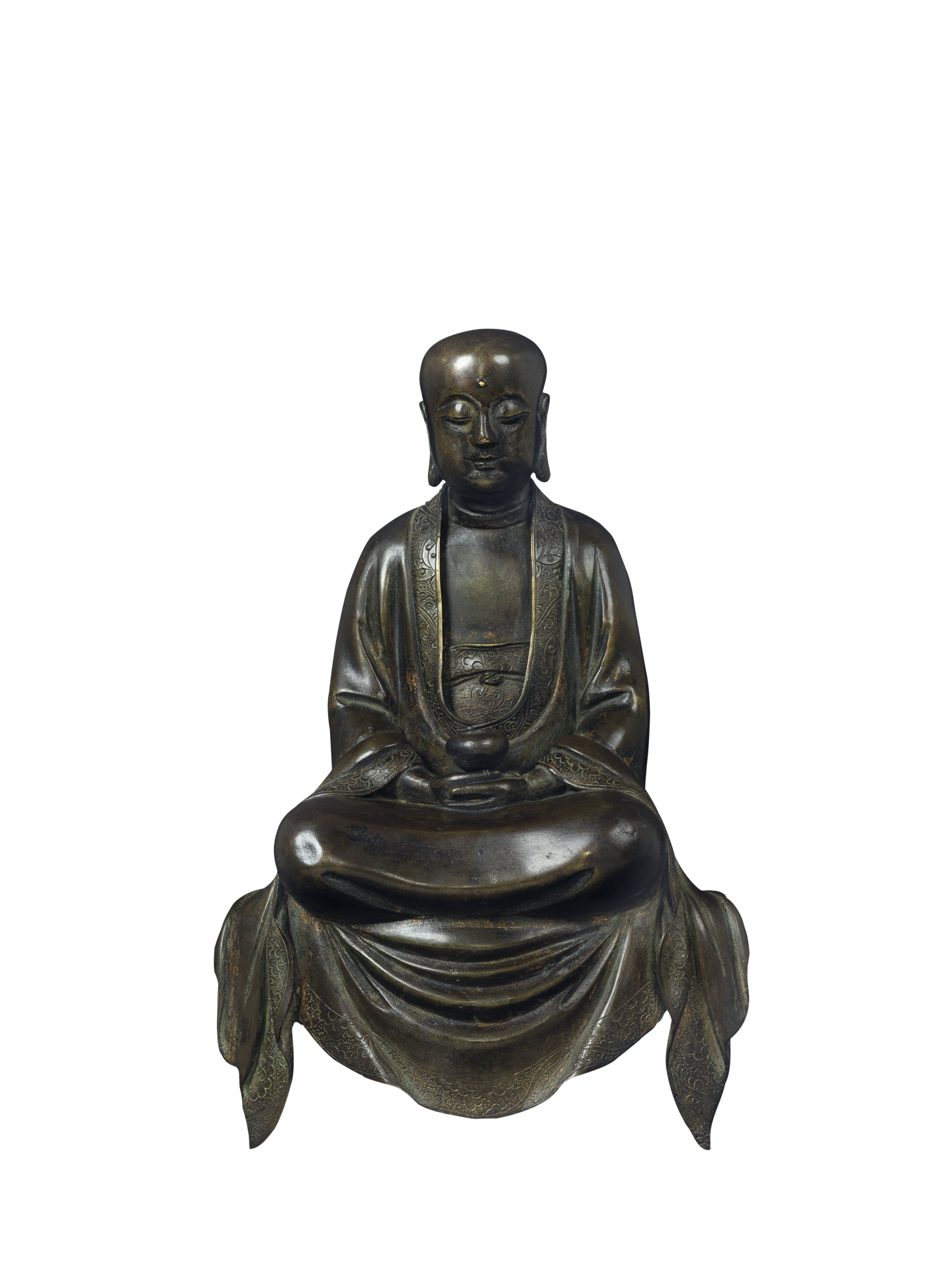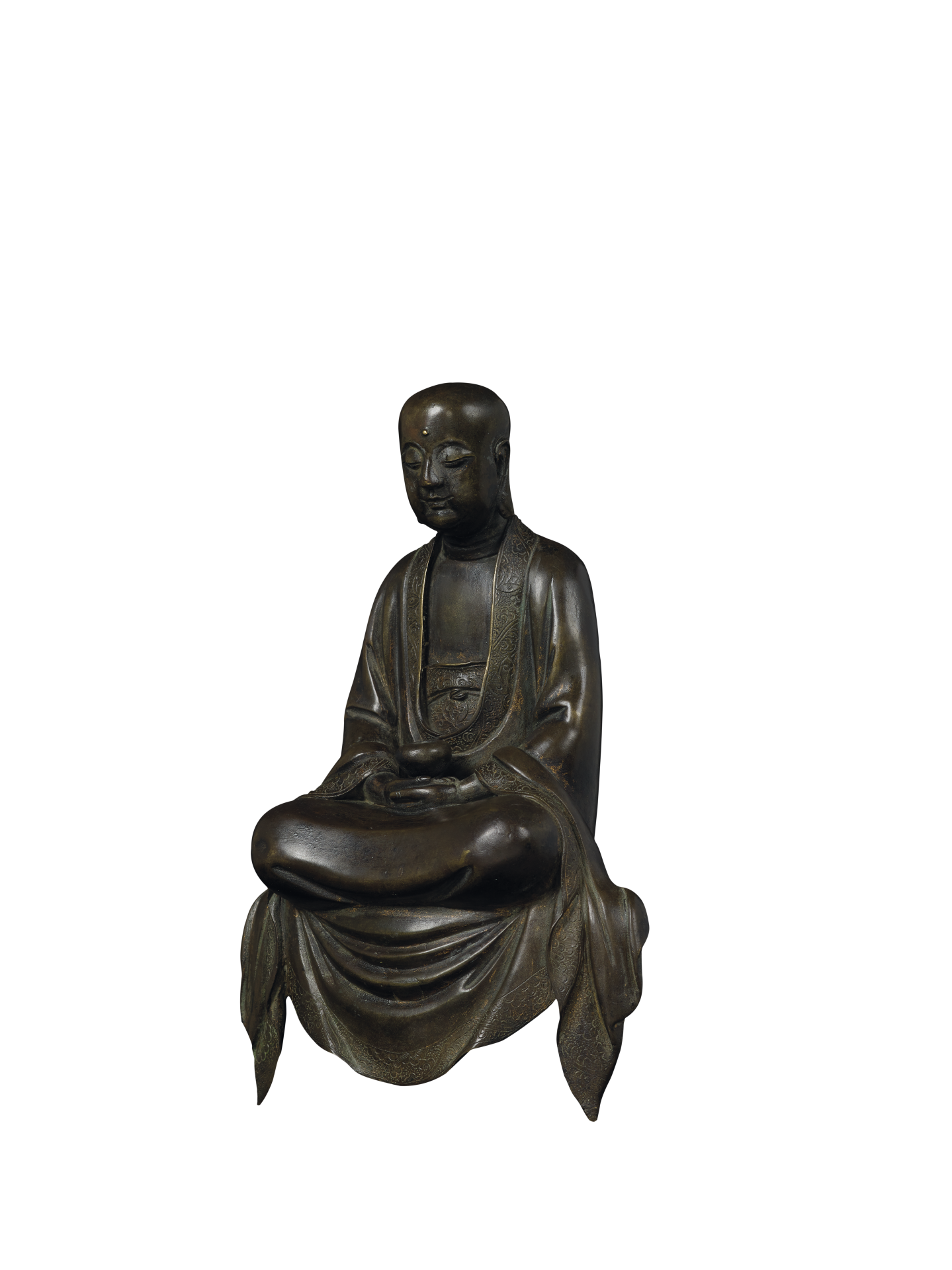Seated Luohan Piṇḍolabhāradvāja
According to Buddhist literature, Piṇḍolabhāradvāja is the head of the 16 Luohans and one of the Four Principal Hearers (śrāvaka). He appears as a Luohan with white hair and white eyebrows, but wears a youthful smiley face. He was originally the minister of King Udayana, but later became a monk under Śākyamuni Buddha and finally attained the Six Supernatural Powers. He was known for his power of subduing the heretics and upholding Buddhist orthodoxy. When he preached, his voice was as loud as a lion’s roar. Hence, he was declared the Foremost of the Lion Roarers.
However, Piṇḍolabhāradvāja was rebuked by the Buddha for wasting his magical powers on flying to get a sandalwood bowl placed on the top of a high pole, originally challenged by a heretic. Subsequently, he was forbidden by the Buddha to enter parinirvāṇa, and had to abide forever in the sentient world to guard the Buddhist Dharma. Thus, he performed many altruistic deeds to benefit sentient beings in the last period of the Buddhist aeon. People who wished to benefit others would also invoke his blessing. In later ages, he was venerated as a holy monk, and his image was honoured and worshipped in temples.
This exquisite seated Piṇḍolabhāradvāja statue of the Ming dynasty (1368-1644) has a serene and relaxed countenance with downcast eyes, and lips with lifted outer corners; sloping round shoulders, and elastic muscles as seen on the flat solid chest partly exposed under the monk’s robe. He is seated with legs locked in ‘lotus posture’ (padmāsana), and hands in ‘meditation gesture’ holding an alms bowl. The physique is well-proportioned. The borders of the garments are finely chiselled with floral and foliage motifs. The front of the inner-garment also features a full-blown lotus. The overall drapery is succinctly represented. The flip-over edges of the robe collar and the undergarment in particular demonstrate the remarkable modelling of clothing details on Ming statuary.

